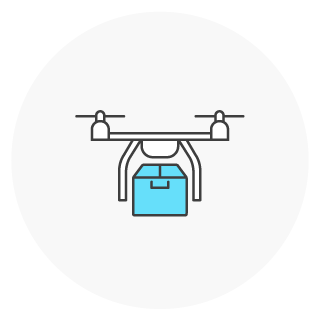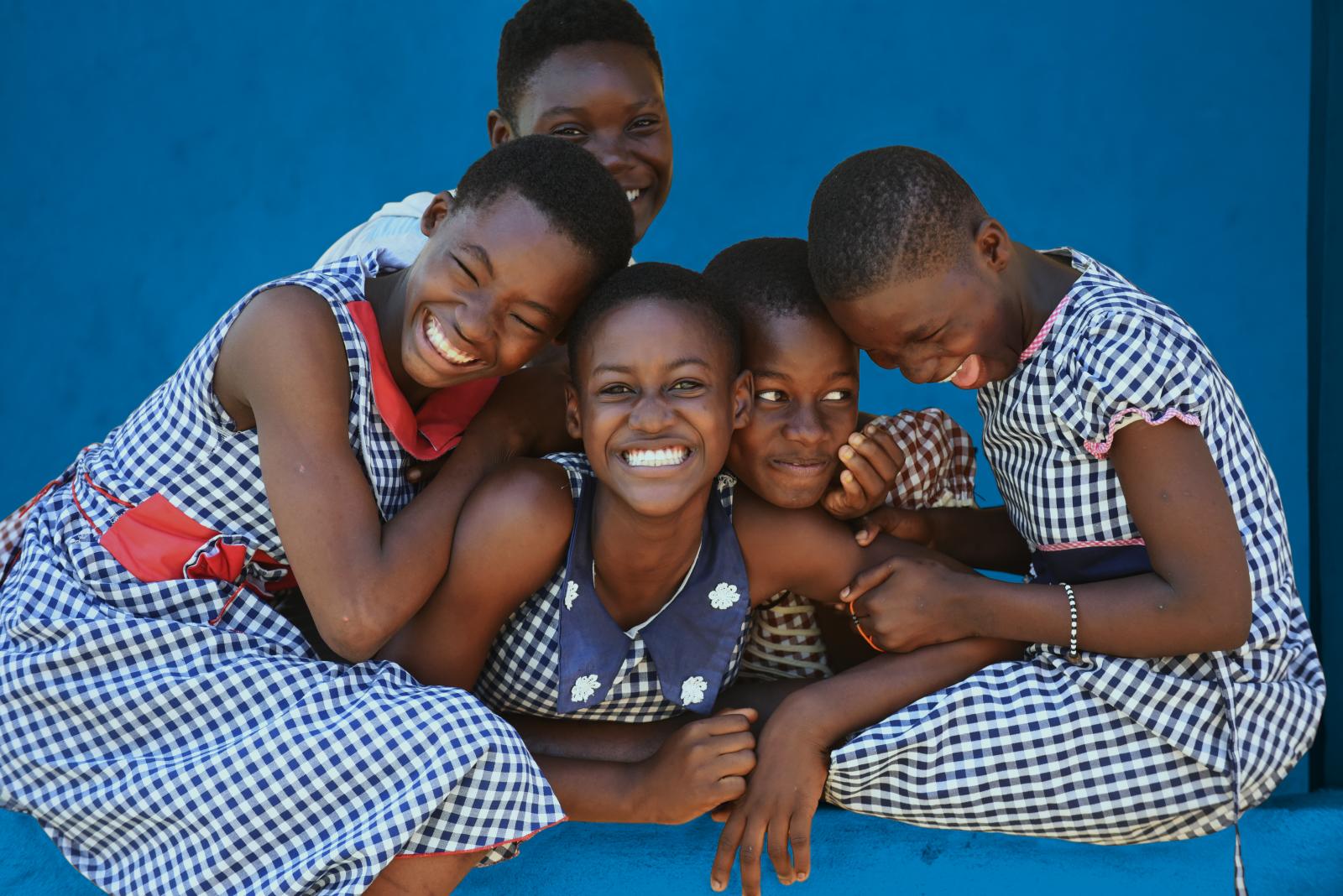UNICEF was established in the aftermath of World War II to help children whose lives and futures were at risk – no matter what country they were from.
The only thing that mattered to UNICEF was reaching children in need. What mattered was achieving results.
The same holds true today. We work day-in and day-out, in some of the world’s toughest places, to reach the children and young people who are most at risk and most in need. We work to save their lives. To protect their rights. To keep them safe from harm. To give them a childhood in which they’re protected, healthy and educated. To give them a fair chance to fulfil their potential.
We are UNICEF. We stand for every child, everywhere. And we never give up.
6 WAYS UNICEF GETS RESULTS
1. Local presence, global reach
UNICEF is active in more than 190 countries and territories. Our vast network of skilled and committed staff means we can take successful approaches from one place in the world and adapt them to meet challenges elsewhere, helping drive results for children and young people at a global scale.
195 million+ children
vaccinated against measles between 2014 – 2018.
70 million+ children
received education materials between 2014 – 2018.
Nearly 170 million people
received safer water between 2014 – 2018.
“I regard UNICEF as my strongest support structure”
Livey, 31, has gone from being a left-to-die pregnant and HIV-positive teenager to becoming a fulfilled mother and an inspiring young mayor in Namibia. Her life tells a powerful story of courage and hope, in which UNICEF played a crucial role to help her not only survive, but also thrive.
2. Saving more lives for less money
UNICEF is funded entirely by voluntary contributions – and we are committed to making every dollar go further to save and improve children and young people’s lives. As one of the world’s largest buyers of lifesaving supplies such as vaccines and mosquito nets, UNICEF has unique leverage to negotiate the lowest prices. Buying big and being transparent enables us to shape markets, cut costs and increase efficiency – and, most importantly, save more lives.
>50% price reduction
for the pentavalent vaccine in 2016 that protects against 5 child-killing diseases. It will save an estimated 5.7 million children’s lives by 2020.
US$351 million saved
on procurement of vaccines and other supplies for children in 2018, bringing our total estimated savings with partners to more than US$2 billion since 2012.

US$1 invested = US$4 saved
emergency preparedness enables UNICEF to respond to crises faster, save more lives and reduce costs.*
*Figure based on data for 2014 – 2017.
“UNICEF gave me hope”
Juan Carlos was born during the Salvadoran Civil War. He fell victim to a landmine accident at the age of 5, and lost all four limbs. UNICEF provided him with support and rehabilitation services so he could grow up, graduate from law school, marry and pursue his passion of painting.
3. Emergency response and readiness
UNICEF is on the ground before, during and after humanitarian emergencies. Our global supply chain and local presence mean we can get help to where it's needed fast – we can ship lifesaving supplies almost anywhere in the world within 72 hours.
Just as important, UNICEF stays and delivers. How we respond in crises lays the foundation for long-term development, just as how we work in non-crisis situations helps communities to weather future shocks.
285 humanitarian emergencies
responded to in 90 countries in 2018.
43 million+ people
reached with safe water in humanitarian situations in 64 countries in 2018.
3 million+ children
treated for severe acute malnutrition in humanitarian situations in 2018.
"UNICEF wanted us to be happy"
Salamatu Korsu, 10, experienced the horror of one of the worst health crises in recent history: the Ebola outbreak. Her neighbourhood in Sierra Leone recorded some of the first cases of Ebola infection in 2014. UNICEF supported the hospital where the young girl was treated and provided care after her discharge.
4. New solutions to old problems
Innovation is at the heart of UNICEF’s ability to achieve results for children and young people. Our global innovation centre helps scale up proven solutions, while a dedicated innovation fund provides financial resources to promising early-stage projects. The results? A new wave of technologies and products to help us reach the hardest-to-reach children and communities.
Big data + social good
inform our response to disasters, epidemics and more. Technology giants such as Google, IBM and Telefónica have joined our Magic Box Initiative.

1st drone-delivered vaccine
in the world given to a child in Vanuatu in 2018, representing a big leap for global health to reach children in hard to access areas.
1 million people a month
reached offline through our Internet of Good Things with educational and lifesaving information in 63 countries and 13 languages.
"I was able to stay healthy. I owe this to UNICEF"
Agamemnon Stefanatos was born in 1953, just after a massive earthquake had ravaged his native island in Greece, killing more than 1,000 people. He survived because of the timely arrival of milk and clothes for newborns that UNICEF had shipped as part of its relief efforts.
5. Powerful partnerships
Strong partnerships with governments, NGOs, civil society and the private sector make UNICEF’s work for children possible. In turn, our credibility, impartiality and record of achieving results make us a partner of choice.
Global brands – from Lego to Unilever – leverage their resources and drive innovation to help children and young people. Our exceptionally generous supporters make a difference through donating, volunteering and being advocates for children in their communities.
And of course, UNICEF’s ability to achieve results for every child depends on our most important partners – governments, which provide critical resources that enable us to reach children wherever they are.
1.5 million+ children
benefitted from Barça Foundation and UNICEF’s partnership to promote child development through sport.

Every young person
in quality education, training or employment by 2030 – the goal of Generation Unlimited, a global partnership that UNICEF helped launch in 2018.
Up to 3 million lives
saved each year thanks to vaccinations, through efforts by Bill & Melinda Gates Foundation, UNICEF and other partners.
“Everything is going back to normal.”
Nine-year-old Tabarak and her family were forced to flee their home in Mosul, Iraq, when she was in kindergarten. Today she's back with her friends and attending a school that was rehabilitated with UNICEF’s support.
6. An influential voice for children
UNICEF is the world’s leading voice for – and with – children. Impartial and non-political, we are never silent about violations of children’s rights.
Our research and reports are a leading source of data and information on the situation of children and young people around the world for journalists, researchers, policy makers and advocates.
Our Goodwill Ambassadors help inspire people around the world to support the cause of children.
In all we do, we work to engage and empower young people to have a voice in the decisions that affect their lives.
7 million+ young people
in more than 50 countries can voice their opinions and connect with their leaders through UNICEF’s social messaging tool U-Report.

178 countries
took part in World Children’s Day – UNICEF’s annual ‘for children, by children’ moment – in 2018, to advance children’s rights around the world.
60 million followers
on social media meant UNICEF was the most followed and liked international organization in the world in 2018.*
*Ranking by Twiplomacy
